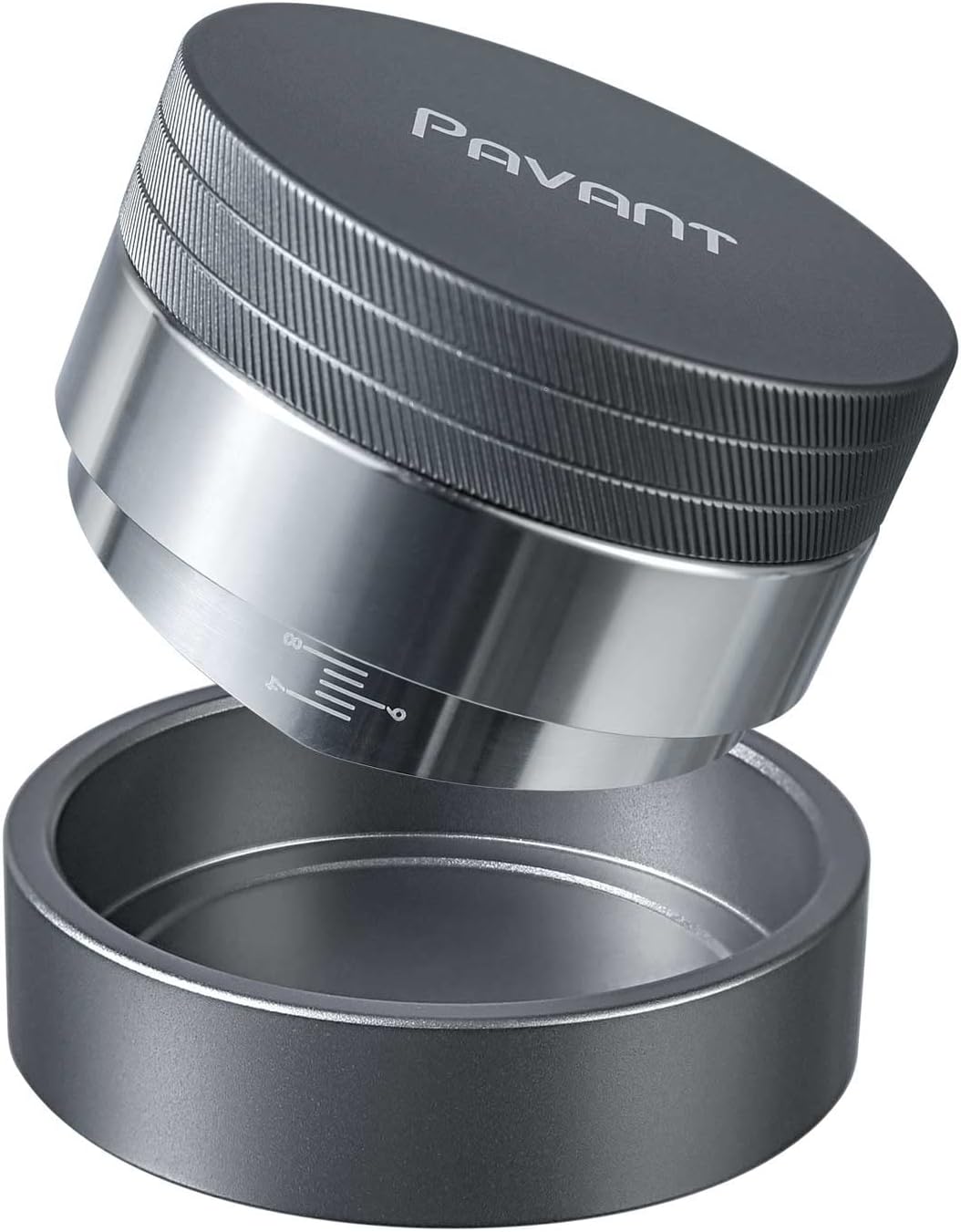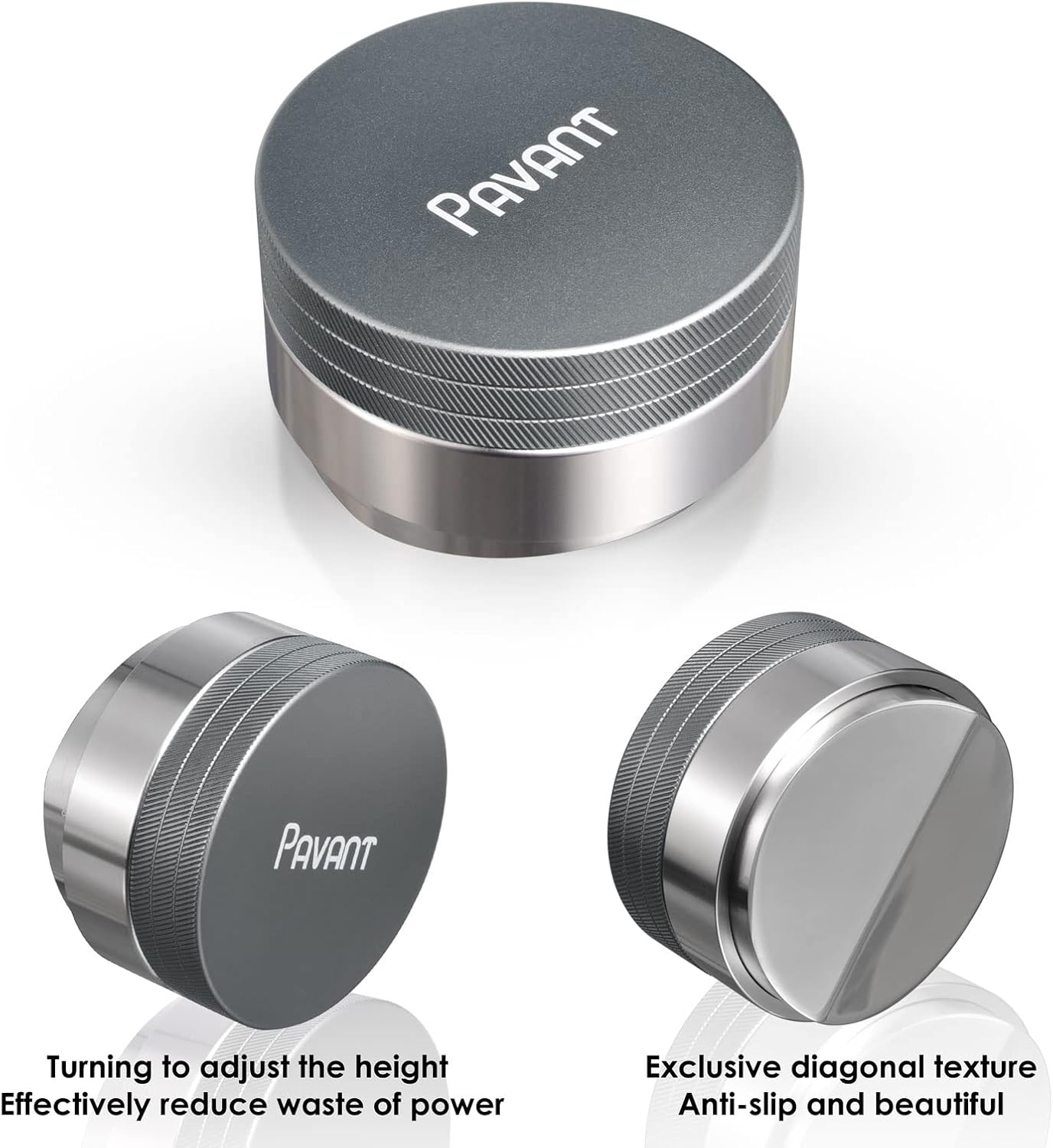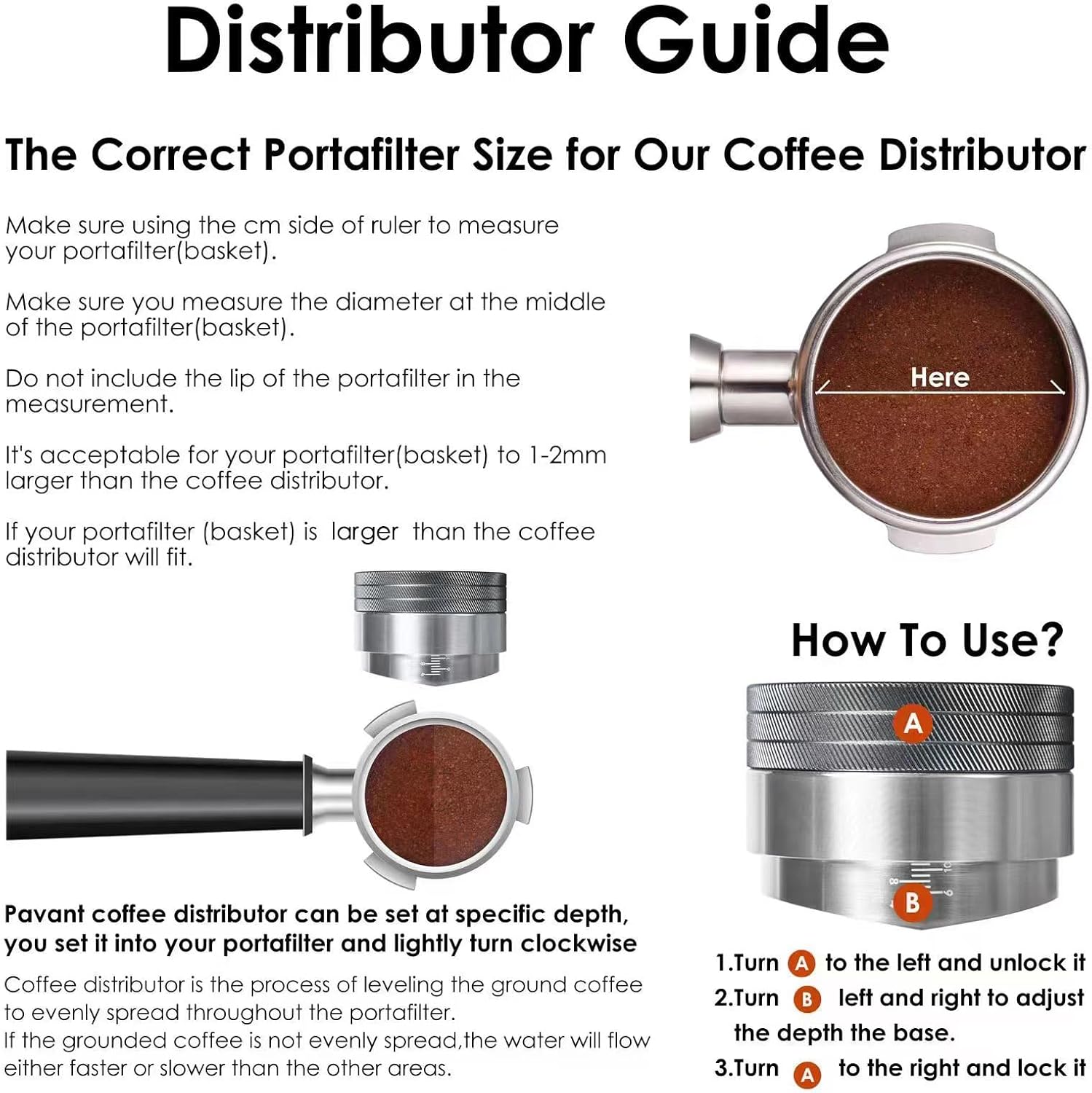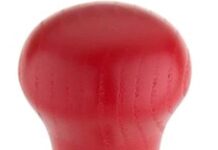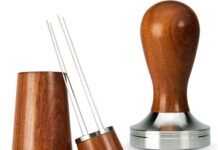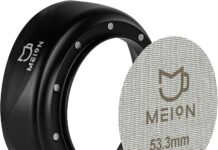Have you ever struggled to get consistent espresso shots because the coffee bed in your portafilter looks uneven no matter how careful you are?
First Impressions and Unboxing
When I first opened the box for the Wedge Espresso Distribution Tool, Pavant Precision Coffee Leveling Distributor with V Blade, Adjustable Depth Coffee Leveler for 58mm Coffee Portafilter…, I was pleased by how solid and well-packed everything felt. The parts were wrapped to prevent scratches, and the finish of the components looked like they were built to last.
Packaging and What Comes in the Box
The package contains the stainless steel base, an anodized aluminum body, the adjustable depth mechanism already assembled, and a small instruction leaflet. I appreciated that there were no loose parts rattling around; everything arrives ready to use with minimal assembly needed.
Build Quality and Materials
I noticed right away that the base is made from 304 stainless steel and the body is anodized aluminum. Those material choices give the tool a premium weight and finish; the steel base removes any worry about rust, and the anodized aluminum feels durable and resists scratches.
Wedge Espresso Distribution Tool, Pavant Precision Coffee Leveling Distributor with V Blade, Adjustable Depth Coffee Leveler for 58mm Coffee Portafilter…
Design and Features
The design is intentionally simple but smart: a wedge-shaped V blade distribution head on a polished 58.5mm base with a height-adjustment collar. I found the combination of precise depth adjustment and a high-polish base to be the most compelling part of the product.
Wedge Shape and V Blade
The proprietary wedge shape and V blade are meant to gently redistribute grounds without prematurely compressing them, which is important for a consistent tamp afterward. I liked how the blade glides through the puck, sweeping grounds evenly rather than smearing or compacting them.
Adjustable Precision Depth (4mm–12mm)
The tool can be set to a working depth between 4mm and 12mm using numbered settings on the shaft, which I found extremely useful for replicable routines. Being able to dial in and record a numerical depth for different doses or baskets made it easy for me to return to a familiar setting and produce consistent results.
58mm Base and Compatibility
The exact diameter of the leveler base is 58.5mm, which fits the standard 58mm portafilter baskets on many prosumer and commercial machines. In my testing it seated snugly on machines like Rancilio, Rocket, and Breville groups, and it lined up well with E61 group-style portafilters.
Finish and Coffee Retention
The base is highly polished stainless steel, and that polish helps minimize coffee retention on the surface of the leveler. I found cleanup quicker because grounds didn’t cling to the tool the way they might to a rougher finish.
Quick Specifications
Below is a breakdown of the core specifications to give you a clear view at a glance. I use this table often when I’m comparing tools or writing notes for friends.
| Feature | Details |
|---|---|
| Product Name | Wedge Espresso Distribution Tool, Pavant Precision Coffee Leveling Distributor with V Blade, Adjustable Depth Coffee Leveler for 58mm Coffee Portafilter… |
| Base Diameter | 58.5 mm |
| Depth Range | 4 mm – 12 mm (numbered settings) |
| Base Material | 304 Stainless Steel (polished) |
| Body Material | Anodized Aluminum |
| Distribution Head | Wedge-shaped V blade |
| Recommended Use | 58 mm portafilters, E61 group styles, most commercial/ prosumer machines |
| Ease of Cleaning | High — smooth polished base reduces retention |
| Typical Technique | 2–3 clockwise twists on un-tamped grounds |
How I Used It
I used the tool with a variety of grind sizes and doses over several weeks to get a sense of how it behaved under real conditions. My routine usually involved dosing, leveling with the Wedge, and then tamping with my usual tamper.
Setup and Calibration
Setting up the depth collar took less than a minute: I loosened the collar, chose a numbered depth, and tightened it back into place. I tested a few different numbers to see how much coffee removal or redistribution I’d get at each setting and wrote down a preferred setting for certain doses.
Distribution Technique (2–3 clockwise twists)
The instructions recommend placing the tool straight onto un-tamped grounds and completing 2–3 clockwise turns. I followed that method and then experimented with extra rotations and small radial adjustments to assess variance. The standard 2–3 turns consistently gave me an even bed without compressing the grounds prematurely.
Dosage and Grind Considerations
I tried the Wedge across lighter and darker roasts, as well as a range of grind sizes from finer for short shots to slightly coarser for a longer extraction. What I noticed is the tool works best when I match grind size and dose to the depth setting; higher doses sometimes needed a deeper setting to avoid taking too much coffee out of the puck.
Performance and Shot Quality
After several weeks of use, my shots became more consistent in both timing and crema texture. I attribute much of that improvement to the more uniform coffee bed the Wedge creates before tamping.
Evenness of the Coffee Bed
The V blade sweeps grounds from the center outward and levels off the top layer, producing a remarkably flat surface. I measured puck thickness with calipers occasionally, and the standard deviation across repeated doses decreased after I started using the tool.
Channeling and Extraction Consistency
I observed fewer signs of channeling — especially in shots where I used the same depth setting every time. The distribution tool reduces pressure points and voids, which translated to more even extractions and more predictable shot times.
Taste Improvements I Noticed
On an espresso level, the results were subtle but meaningful: sweeter notes became clearer, and some of the harsh edges smoothed out. I found the clarity particularly noticeable on medium roasts; the uniform extraction highlighted the cup’s mid-range sweetness and balance.
Cleaning and Maintenance
Cleaning is straightforward because the tool’s base is polished stainless steel and the body is anodized aluminum. I rinsed it under warm water and wiped it with a soft cloth after each session; for deeper cleaning I used a mild detergent and made sure to dry it thoroughly.
Surface Care and Longevity
Because of the stainless steel base I’m not worried about rust, and the anodized aluminum resists dings and corrosion better than untreated metals. With normal home use, I expect this tool to last a long time if I continue basic care like drying and avoiding harsh abrasives.
Compatibility with Portafilters and Machines
This tool is built for 58mm baskets and is compatible with most common portafilters in the prosumer and commercial segments. I tested it on portafilters from Rancilio, Breville, and Rocket and experienced a good fit on all of them.
Fit on Rancilio, Gaggia, La Pavoni, and More
The 58.5mm base mates well with the standard 58mm basket because the slight overhang helps keep the leveler centered. It’s also helpful that the tool’s outer rim doesn’t interfere with handles or group heads, so I could use it with a range of machines without awkward positioning.
Pros and Cons
I want to be upfront about strengths and trade-offs. The tool brings precision and repeatability to distribution, but it’s not a universal solution for every workflow or preference.
Pros:
- Precise depth settings for repeatable distribution
- Solid materials (304 stainless steel, anodized aluminum) resist rust and wear
- Polished base reduces coffee retention for easy cleaning
- Effective at reducing channeling and increasing consistency
Cons:
- Designed for 58mm baskets only; not suitable for smaller portafilters
- May require some trial-and-error to find the ideal depth for each dose and grind
- Slight learning curve for integrating into existing routines
Comparison with Other Distribution Tools
When I compare the Wedge to flat disc levelers and those with cross-cut designs, its wedge shape stands out in how gently it treats the grounds. Flat levelers can be effective but often smear or overly compact, while cross-cut distributors can be aggressive if not used carefully.
Wedge vs Flat Levelers
Compared to a flat leveler, the wedge is less likely to compress the puck too early and seems to preserve the intended density for the final tamp. I found that flat levelers can sometimes create an overly uniform surface at the expense of internal homogeneity, whereas the wedge balances both.
Wedge vs Distribution Tools with Tampers
Some combo tools attempt to distribute and tamp in one motion; I prefer separating the two steps. The Wedge focuses on distribution and leaves tamping to my dedicated tamper, which gives me more control over final pressure and consistency.
Tips and Tricks I Learned
I picked up several small habits that made the tool more effective in my workflow. These tweaks helped me get consistent doses and minimized the need to fiddle during shot pulling.
Getting the Most Accurate Depth Setting
I recommend recording depth numbers alongside dose and grind settings in a small notebook or app. After a few days of consistent logging, I had a set of go-to combinations that saved me time.
Preventing Ground Retention and Clumping
If you notice clumping, try a quick gentle stir with the V blade rather than extra rotations; too many passes can redistribute unevenly. Also, making sure your dosing funnel is consistent and your grinder is clean helps the Wedge do its job effectively.
Who Should Buy This?
I would recommend this tool to home baristas and small cafes that use 58mm portafilters and want to improve consistency without radically changing routine. If you’re committed to dialing in recipes and tracking variables, this leveler will be a helpful addition.
Final Verdict and Rating
Overall, I’m impressed by the Wedge Espresso Distribution Tool, Pavant Precision Coffee Leveling Distributor with V Blade, Adjustable Depth Coffee Leveler for 58mm Coffee Portafilter…. It balances durable construction, thoughtful design, and practical adjustability, and I found it to meaningfully improve shot-to-shot consistency in my own routine.
Frequently Asked Questions
Q: Will this fit my 58mm portafilter? A: Yes — the base measures 58.5mm and is intended for standard 58mm baskets. In my experience it fits most common 58mm portafilters used in prosumer and many commercial machines.
Q: Do I need to tamp after using this tool? A: Yes — this tool is designed to distribute and level the grounds; you should still tamp after distribution for proper extraction. I use my regular tamper and find the tamp step easier and more predictable after distribution.
Q: How often should I clean the distributor? A: I rinse and wipe it after each use and perform a deeper clean weekly depending on use volume. The polished stainless base is easy to keep clean, and the anodized body tolerates regular handling.
Q: Is the depth adjustment reliable over time? A: The numbered collar mechanism is simple and robust; in my testing it held settings well and didn’t slip during normal use. If you routinely adjust depth, I’d recommend periodically checking the collar to ensure it remains snug.
Q: Can this tool be used for non-espresso brewing? A: It’s specifically designed for espresso portafilters and basket sizes, so it’s not ideal for manual brewing methods like V60 or AeroPress. I keep it reserved for my 58mm portafilter work.
Q: Will it prevent all channeling? A: No tool can guarantee zero channeling, but this distributor significantly reduces the common causes of channeling by evening out the coffee bed. Proper grind, dose, tamp, and machine maintenance remain important for optimal results.
Final Notes and Personal Routine
I’ve incorporated the Wedge into my daily espresso routine; I typically dose, briefly level the grounds with 2–3 clockwise turns at my recorded depth, then tamp and pull. That simple change has helped steady my extraction times and reduce the number of missed shots. I like the feel of the tool in my hand, the quick cleanup, and the way it integrates with my existing gear.
If you’re serious about consistent espresso and you use 58mm baskets, this tool deserves consideration. It’s not a miracle worker, but it’s a reliable, well-built addition that makes a measurable difference in real-world use.
Disclosure: As an Amazon Associate, I earn from qualifying purchases.



